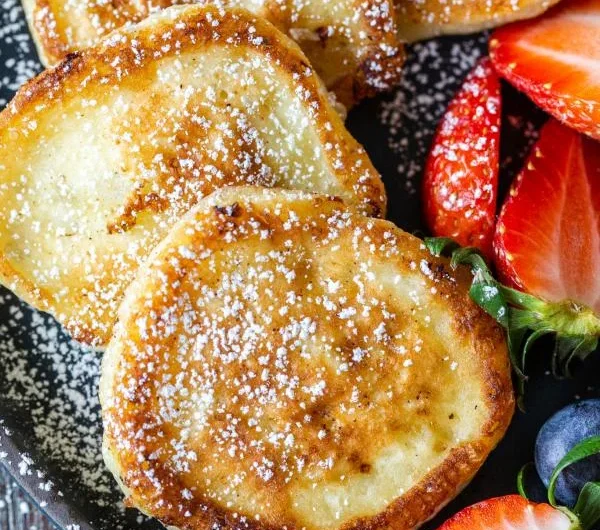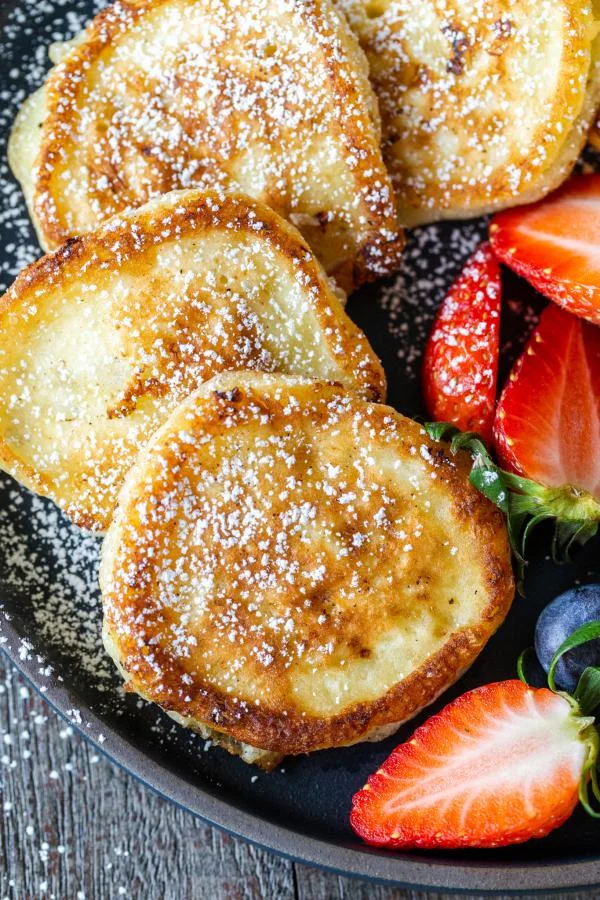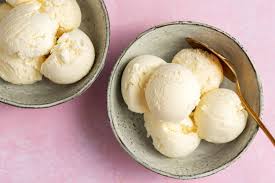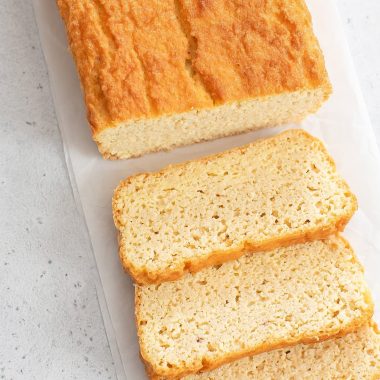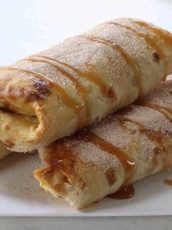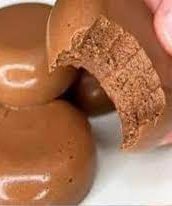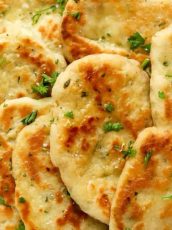Cottage cheese pancakes are a protein-packed, fluffy, and flavorful alternative to traditional pancakes. If you’ve never tried incorporating cottage cheese into your pancake batter, prepare to be amazed! The creamy texture and subtle tang of the cheese create a rich and delicious bite, making every pancake light yet satisfying.
These pancakes are incredibly versatile—you can enjoy them sweet or savory, topped with fruit, syrup, or even Greek yogurt. Plus, they’re a fantastic way to sneak in extra protein without compromising taste or texture. Whether you’re a fitness enthusiast looking for a nutritious breakfast or just someone who loves a good pancake, this recipe is perfect for you.
Expert Tips for Making Perfect Cottage Cheese Pancakes
1. Choosing the Best Cottage Cheese
Not all cottage cheese is created equal! The curd size matters—smaller curds blend better and create a smoother pancake batter. You can use full-fat, low-fat, or non-fat cottage cheese depending on your dietary preference. Full-fat options provide a richer taste, while non-fat versions keep the recipe light.
2. Selecting the Right Flour
The type of flour you use affects the texture of your pancakes. Here are some options:
- All-purpose flour – Classic and reliable, giving your pancakes a soft, fluffy texture.
- Whole wheat flour – Adds a slightly nutty taste and extra fiber, making it a healthier alternative.
- Oat flour – A great gluten-free option that enhances the heartiness of your pancakes.
- Almond flour – Ideal for a low-carb twist, though it produces slightly denser pancakes.
3. Perfecting the Batter
- For a chunkier texture, mix the batter by hand so you can enjoy pockets of melty cottage cheese in each bite.
- For a smoother consistency, blend all ingredients together in a food processor or blender.
4. The Right Cooking Temperature
Avoid the temptation to turn up the heat! Cooking these pancakes on medium heat ensures golden-brown edges without burning. If your skillet is too hot, the outside will cook too quickly, leaving the inside raw.
5. Frying for the Best Texture
Use a non-stick pan or cast-iron skillet for the best results. When frying, choose canola oil, coconut oil, or light olive oil for a crispier exterior. Butter adds a rich flavor, but oil is better for achieving golden-brown perfection. Remember to reapply oil between batches to prevent sticking.
How to Serve Cottage Cheese Pancakes
There are countless ways to enjoy these delicious pancakes. Here are some of our favorites:
Sweet Toppings:
- A drizzle of maple syrup or honey
- Fresh berries (blueberries, raspberries, or sliced strawberries)
- A dollop of Greek yogurt with a sprinkle of cinnamon
- Nut butter (peanut, almond, or cashew) for a protein boost
Savory Options:
- A spread of cream cheese or ricotta with smoked salmon
- A sunny-side-up egg and avocado slices
- A drizzle of hot sauce for a spicy kick
Meal Prep & Storage Tips
Making the Batter Ahead of Time
If you want to save time in the morning, you can make the batter ahead and store it in the fridge overnight. This helps the flavors meld together and can make your pancakes even tastier! Just give the batter a good stir before using.
Storing Leftover Pancakes
If you have extra pancakes, don’t worry! Here’s how to store and reheat them:
- Refrigeration: Keep leftover pancakes in an airtight container for up to 3 days.
- Freezing: Stack pancakes with parchment paper in between and freeze for up to 3 months.
- Reheating: Warm them in a microwave, oven, or skillet with a bit of oil to restore crispiness.
Now that you know all the secrets, let’s dive into the full step-by-step recipe!
